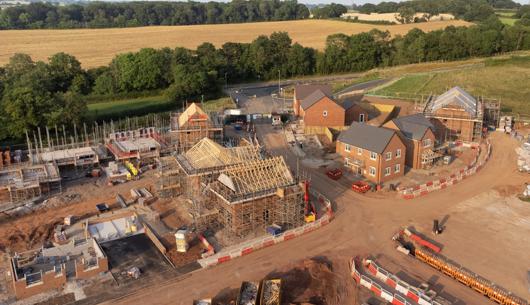Taurusbuild Ltd and others v McQue and another [2019] UKUT 81 (LC)
The Upper Tribunal turns conventional wisdom on its head by ruling that an easement could be implied into a mortgage of part under the rule in Wheeldon v Burrows.
The Upper Tribunal turns conventional wisdom on its head by ruling that an easement could be implied into a mortgage of part under the rule in Wheeldon v Burrows.
Facts
Dinsdale Hall (the Servient Land) and 2 The Hall (the Dominant Land) were owned by the same people, Mr and Mrs Ward (W), but registered under two separate title numbers. A roadway was used by occupiers and visitors to the Dominant Land giving access to car parking spaces. Both the roadway and the car parking spaces formed part of the Servient Land.
The Dominant Land was mortgaged in 2005 by W. It was repossessed by the lender in 2011 and sold to the respondents (M) in 2012 without the express grant of rights over the roadway or the car parking spaces on the Servient Land.
In 2011, Law of Property Act receivers were appointed over the Servient Land pursuant to an earlier mortgage granted over that property by W. In 2013, the receivers (as W’s agents) sold the Servient Land to the appellants (T).
M applied to the Land Registry to register an easement in favour of the Dominant Land to use the roadway and the car parking spaces on the Servient Land. T objected to this.
Issue
Was a right to use the roadway and the car parking spaces on the Servient Land implied into the 2005 mortgage deed of the Dominant Land under the rule in Wheeldon v Burrows?
Decision
An easement was implied into the 2005 mortgage deed because otherwise it would be a derogation from grant to deny the lender the rights claimed for the benefit of its mortgaged property (the rule in Wheeldon v Burrows is based on the non-derogation from grant principle).
It was always W's intention that the Dominant Land should enjoy vehicular access and parking over the Servient Land. This was evidenced by the planning permission obtained by W to convert the Servient Land from a nursing home to residential apartments, the site layout and a letter box at the front of the Dominant Land. Without this easement, the Dominant Land would be significantly less valuable as security.
Points to note/consider
1. Under the rule in Wheeldon v Burrows, all quasi-easements (i.e. rights that would be easements if the dominant and servient lands were not owned by the same person) exercised over the retained land for the benefit of the land being sold are ‘upgraded’ to full easements on a sale as long as they are: (1) necessary for the reasonable enjoyment of the part sold; (2) used at the time by the seller for the benefit of the part sold; and (3) continuous and apparent.
2. Despite the convenience of the outcome here, it is hard to see how this decision can be correct. It is a fundamental principle of the law of easements that, for an easement to be validly granted (and the rule in Wheeldon v Burrows operates to impliedly grant an easement), the dominant and servient lands must not be owned by the same person (known as ‘unity of seisin’). In this case, the judge mysteriously said that he did not accept that the principle of unity of seisin was fatal to the easement claimed, but did not go on to explain why.
3. Despite the outcome here, most people accept that it is not possible to grant and reserve easements in a mortgage of part. The case is therefore a reminder of the problems with mortgages of part and, whilst there are imperfect and cumbersome ways around the problem, they are best avoided by lenders if at all possible.
4. Once the judge ruled that an implied easement was granted by the 2005 mortgage, he went on to decide that this was passed on to M when the lender sold the Dominant Land to M in 2012 (even though there was no mention of the rights in the 2012 transfer to M). This was because of section 62 of the Law of Property Act 1925 which, unless excluded, operates to include in a conveyance of land all rights and easements benefiting that land.
Contact

David Harris
Professional Development Lawyer
david.harris@brownejacobson.com
+44 (0)115 934 2019








































